Salar de Uyuni Night Stargazing Tour
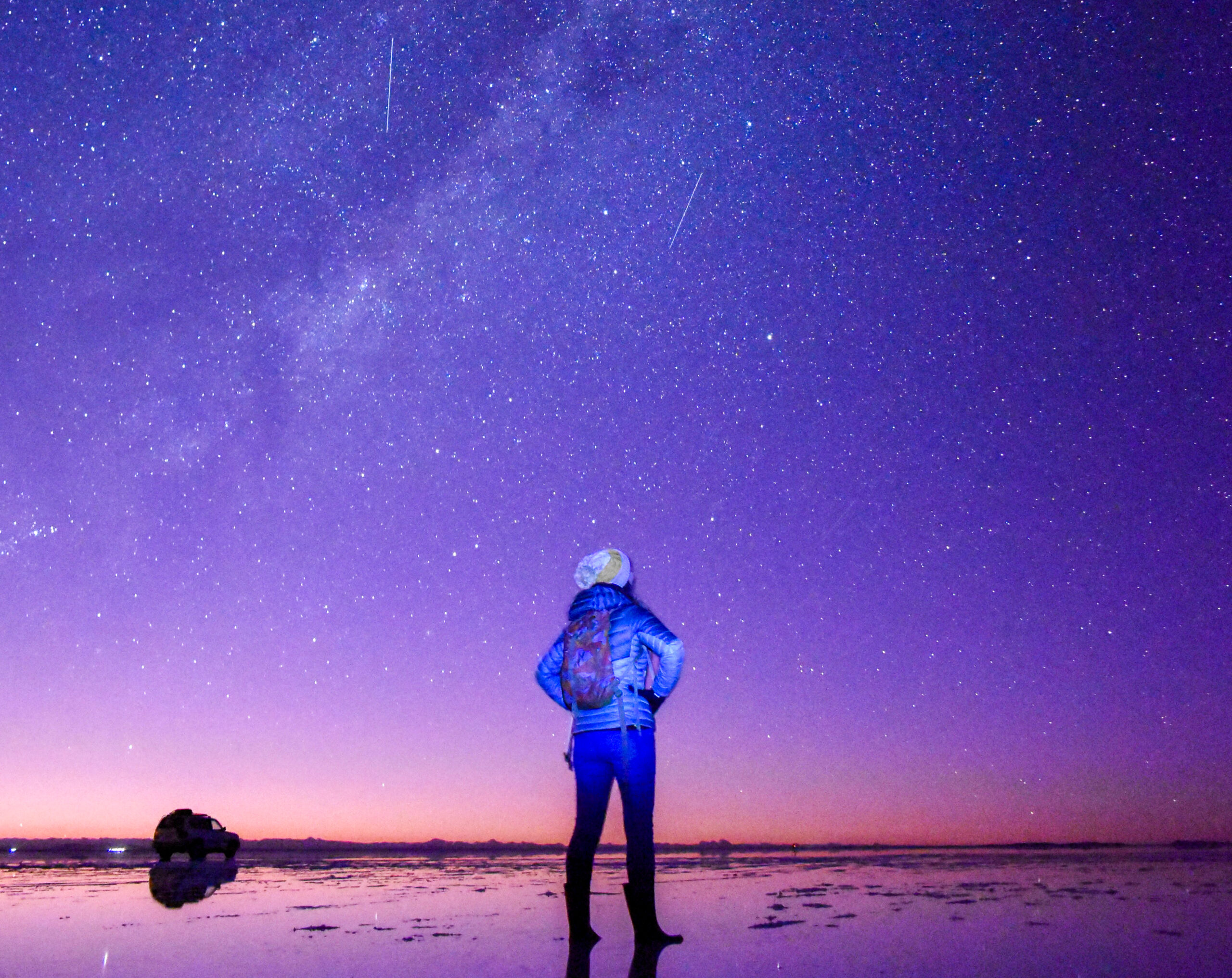
It’s 3 am. It’s dark and cold. You’re moseying through calf-deep water in rain boots across some salt flats you were told you MUST visit while traveling in Bolivia. You look up and see millions of stars and the Milky Way shining bright above you. It’s the clearest night sky you’ve ever seen. The Uyuni Salt Flats or a Salar de Uyuni night stargazing tour is a must for your South America travel bucket list.
Visiting the Uyuni Salt Flats at any time of day is possible. Some people visit on a 3-day trip from Uyuni to San Pedro de Atacama, Chile, while others go on a one-day trip from Uyuni. I explored the salt flats for a few days but my favorite experience was a Salar de Uyuni night tour. It was one of my favorite South American highlights along with hiking the Salkantay Trek in Peru and Laguna de Los Tres in Patagonia.
Where are the Uyuni Salt Flats?
Salar de Uyuni is located in southwest Bolivia, about a 9-hour bus ride from La Paz and a 4-hour bus ride from the city of Potosi. The Uyuni Salt Flats are located alongside the Andes Mountains and Chile’s Atacama Desert.
Salar de Uyuni lies in South America’s Altiplano – the Andean Plateau. It’s a high plateau located at 12,000+ feet (~3,660 m) in elevation extending across southern Peru, western Bolivia, and northern Chile. The environment here creates a unique geologic landscape and dramatic scenery spanning beyond Lake Titicaca to the Atacama Desert. It’s unlike anywhere else in the world.
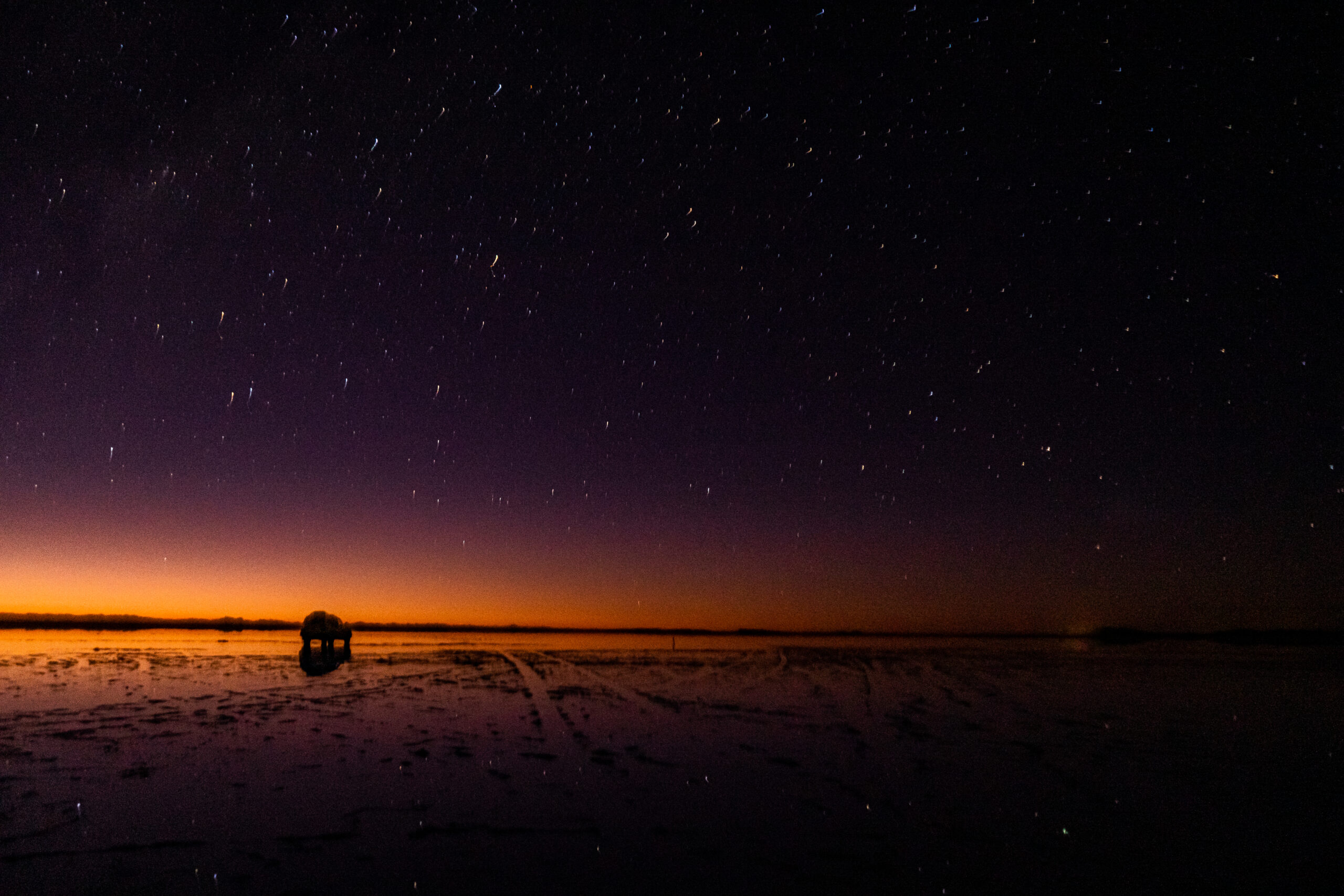
How to Book a Salar de Uyuni Night Tour Tickets
The best way to book a Salar de Uyuni night stargazing tour is by walking the main street in Uyuni and booking directly with an agency in person. Tourism outfitters line the main street of town. Trips depart daily at all times of the day. It’s very easy to book a trip one day in advance.
Some outfitters offer Salar de Uyuni night stargazing trips. Visit multiple tour agencies to get the best price.
You can also book a Uyuni Night Tour ahead of time on popular sites like Viator or GetYourGuide but you’re sure to pay more this way and it’s hard to know how much profit the locals receive.
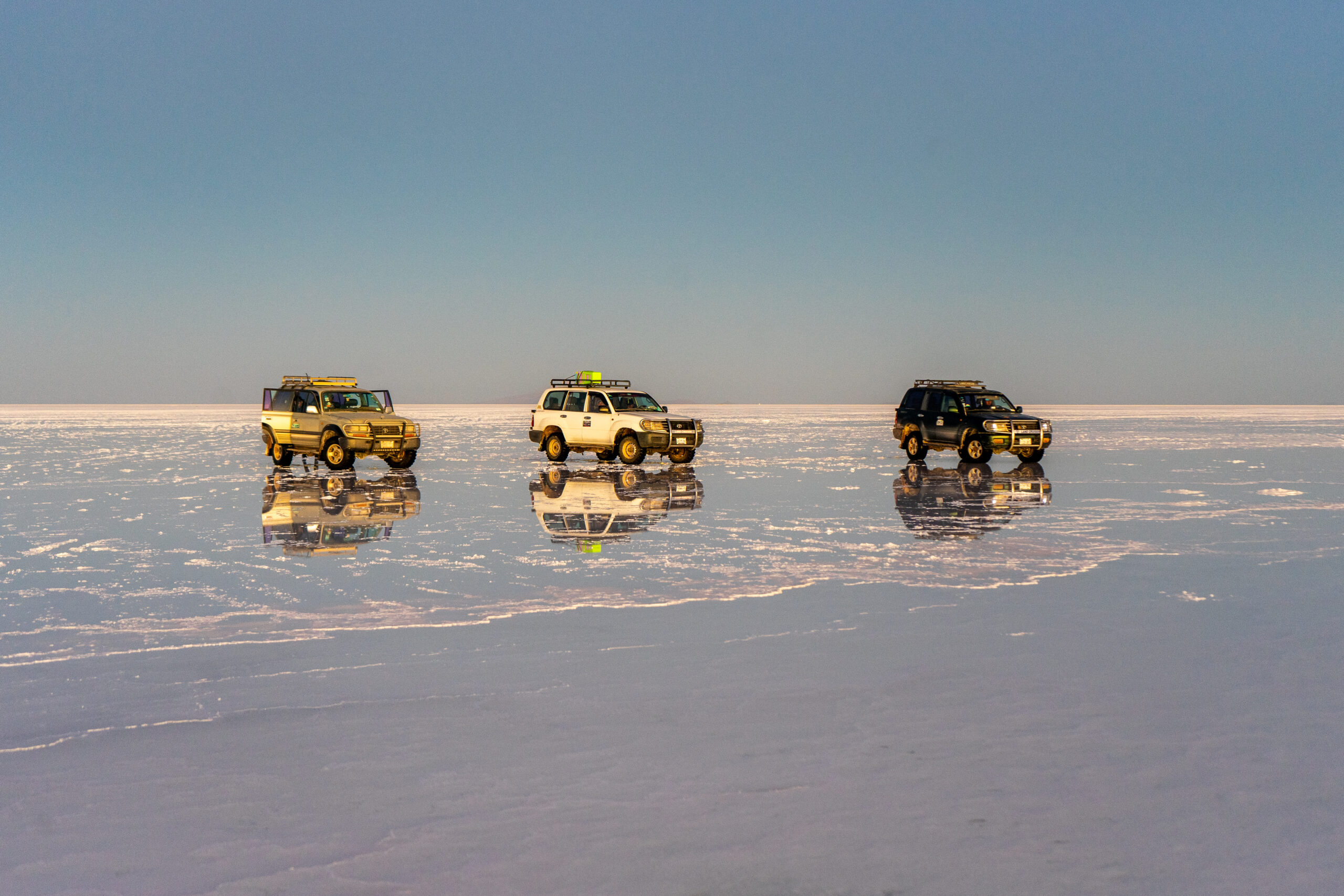
Best Time to Visit Bolivia’s Salt Flats
Bolivia’s Salt Flats are unbelievable to explore year-round but the wet and dry seasons offer different experiences. The wet season in Bolivia is from December to April. I visited Salar de Uyuni in late December and loved seeing the salt flats covered in water which created the famous mirror reflection.
The dry season, from May to November is a great time to visit if you want to see the see the defined and remarkable crystal patterns of the salt flats. Salar de Uyuni night stargazing trips depart year-round.
Salar de Uyuni Night Itinerary
After booking your Salar de Uyuni night tour your booking company will provide details about your pick up and drop off time at your accommodation. Here is an idea of the itinerary based on my Uyuni stargazing tour when I went in December. Timing varies by an hour or two depending on when the sun rises.
3:00 – 4:00 am: The guide picks you up in a jeep from your accommodation.
4:00 am: Quick stop at the tour agency warehouse to pick up rain boots. Continue driving to Uyuni Salt Flats, about 30 minutes from town.
4:30 am: Arrive at Salar de Uyuni. It’s cold & dark.
4:30 am – 6:00 am: Stare at the night sky and Milky Way. Guides take photos of group members.
6:00 am – 7:00 am: The sun rises within this time frame. During the rainy season, you can run through the water while the Salar de Uyuni mirror reflects at sunrise.
7:00 am: Drive back to Uyuni and return to accommodation.

Is Uyuni town worth visiting?
The town of Uyuni itself is a dusty town located minutes from Salar de Uyuni. While it’s not the most visibly appealing town, it is the launching point for all Uyuni salt flat trips from day and sunset tours to border crossing tours to San Pedro de Atacama, Chile.
If you’re spending a few days in Uyuni it’s definitely worth visiting the local market in the center of downtown. However, one full day is enough in the town of Uyuni itself.
There are also several restaurants serving typical Bolivian cuisine. Llama Cafe is a great Bolivian vegetarian restaurant in Uyunni!
Tips for Salar de Uyuni Night Stargazing Tour
Dress warm. Temperatures during a Salar de Uyuni night tour can drop below freezing. Sometimes temperatures at the salt flats are below 0 C, under 30 degrees F. Bring plenty of layers, a hat, gloves, and warm socks.
Prepare for altitude. The city of Uyuni sits at about 12,000 ft or 3,700 m. Hopefully, you’ve already some time in Bolivia to acclimate. However, if you’re reaching the Uyuni Salt Flats from San Pedro de Atacama in Chile, you’re likely to notice the altitude more significantly. Some symptoms include headache, vomiting, loss of appetite, dizziness, and shortness of breath. If you’re experiencing mild symptoms of altitude sickness, take your days slow, rest, and drink plenty of water.
Bring a backup battery. A backup or rechargeable battery is a great option for both cameras and phones. Batteries die quicker in the cold of night and you don’t want to miss out on snapping long-exposure photos of the Milky Way.
Visit the salt flats during a new moon. The best time for a Salar de Uyuni night stargazing tour is around a new moon on a clear night. When the moon is full the sky is brighter and it’s harder to see the stars. New moons equal the darkest skies and therefore, the most impressive Milky Way sightings.
Book your tour directly in Uyuni. You’ll save a lot of money when booking a tour in Uyuni rather than booking it online or in La Paz. It’s also best to book your tour in town so you have firsthand communication with the outfitter and you can ensure your money is directly supporting the locals.
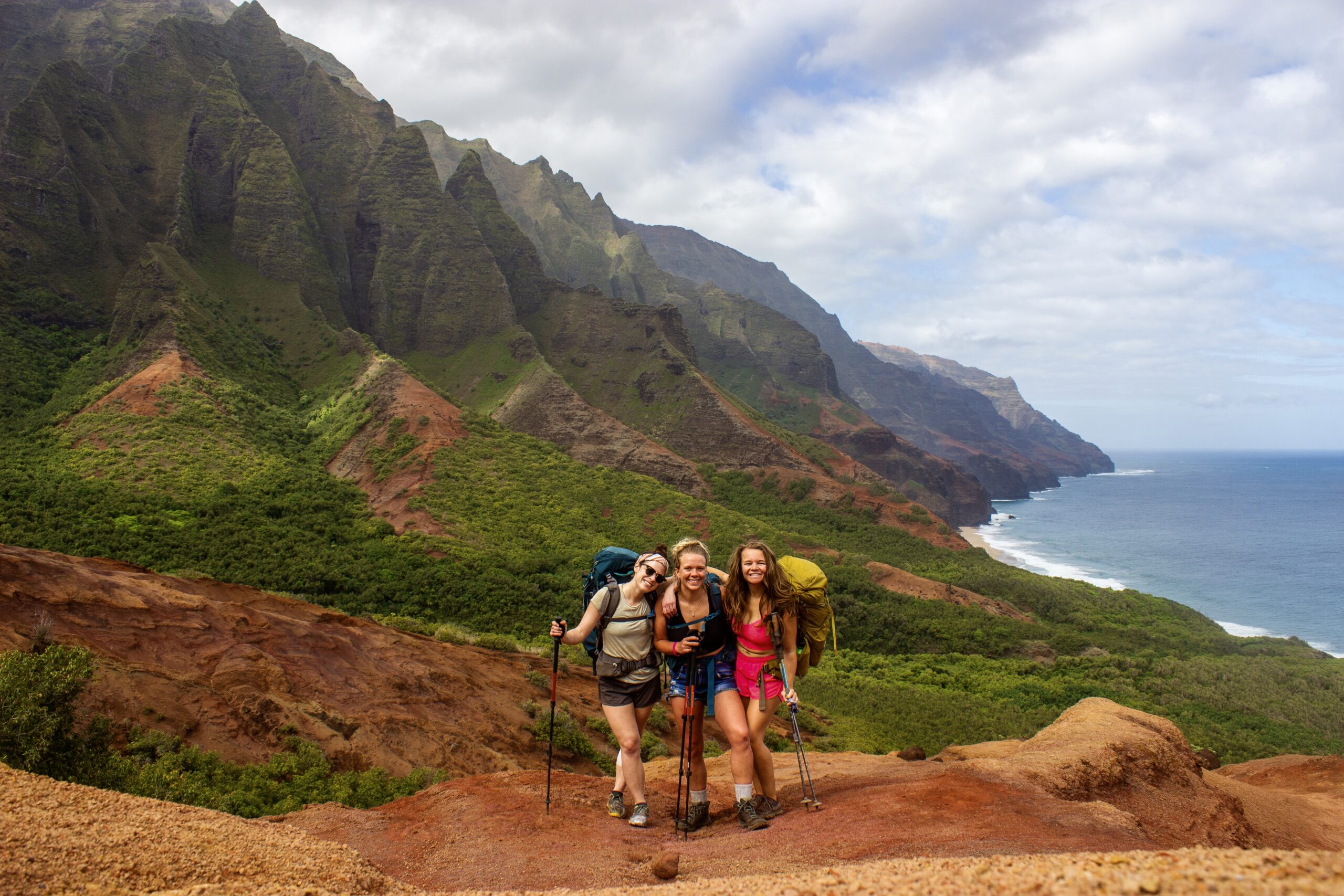


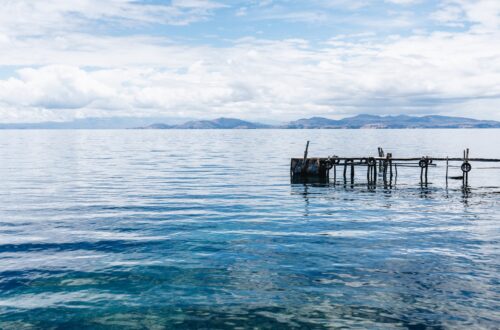
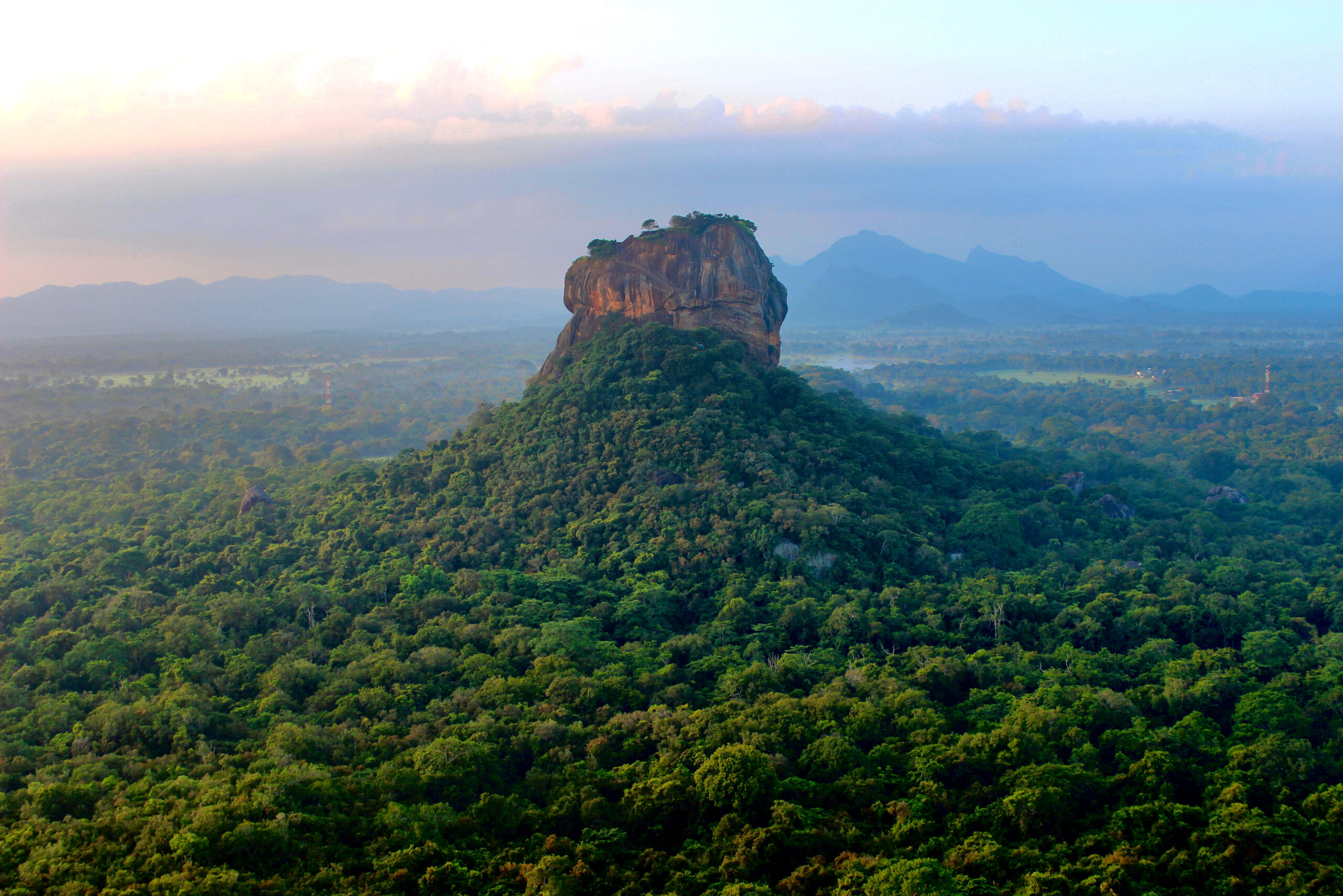
2 Comments
wichaya rosy
Love your photos and writing style. Just finished booking Salkatay for October. Cannot wait 🙂
Nicole Jordan
Thank you! And that’s amazing! You’re going to have a great time!